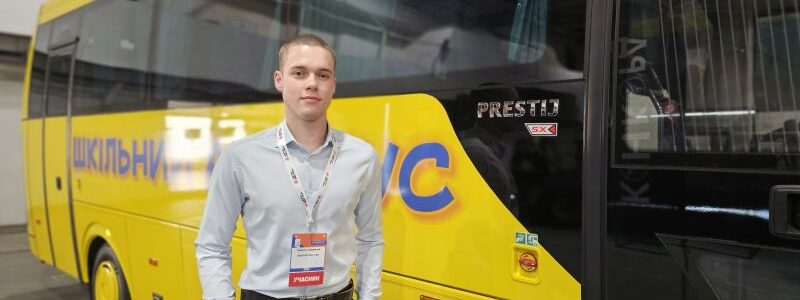
Sales of new buses (excluding minibuses) in Ukraine in January-September this year increased by 20% compared to the same period in 2024, reaching 613 units, of which 91% were small buses, according to Mykyta Haidamaha, head of the Temsa project at Auto-Region.
“2025 was a year of quiet but important changes for the Ukrainian bus market. After two years of uncertainty and declining purchases by the private sector, the market is gradually recovering – not thanks to large contracts or foreign investment, but through local decisions, municipal tenders, and transport renewal programs for communities,” he told Interfax-Ukraine.
He emphasized that school, municipal, and suburban transportation account for most of the demand and keep the market afloat, whereas five years ago, private carriers and travel companies were the main players.
In addition, businesses and private and state-owned enterprises use buses to transport personnel.
According to data provided by Haidamaha, domestic manufacturers were the leaders in the bus segment in January-September: Ataman from the Cherkasy Bus factory with 244 units, followed by ZAZ buses manufactured by the Zaporizhzhia Automobile Plant with 136 units, and in third place were Etalon buses manufactured by the Chernihiv Automobile Plant, with 120 units.
“This demand is facilitated by the school vehicle fleet renewal program, which continues even in wartime,” the expert noted.
At the same time, he noted unexpectedly active dynamics in the sales of large-class buses: in the first nine months of 2025, sales increased 2.7 times – to 37 units, or 6% of the market.
“Isuzu Citiport (20 units), Iveco Urbanway (5), and Troliga Pegasus (6) are reappearing on the roads, mostly in cities that are gradually upgrading their public transport,” said Haidamaka.
He added that the process is not yet large-scale, but it is indicative: city authorities are beginning to think of large buses not as a “luxury” but as an element of infrastructure. Technical requirements are also gradually changing—today, Euro6 diesel engines predominate, but electric solutions are being tested in parallel.
Another interesting factor, according to him, is passenger capacity: while the 16-25 seat segment remains the largest (68%), the 26-29 seat segment has become the most dynamic: its share has grown from 20% (25 units) in September 2024 to 35.8% (39 units) in September this year.
“Such buses are more convenient for suburban routes — more passengers without additional fuel costs, and carriers are looking for the right balance,” says Haidamaha.
Speaking about the presence of Turkish manufacturer Temsa’s buses on the market, he noted that seven buses of this brand were registered in Ukraine in nine months, compared to 15 last year, but the trend towards purchasing models with Euro6 engines continues, so there is a possibility that demand will grow.
Haidamaha also provided statistics on bus registrations by region – the most active is the Sumy region (65 units), followed by Kyiv (63), Lviv (53), and Mykolaiv (41) regions.
At the same time, the highest growth in registrations was in Rivne region (6.6 times), Ternopil region (5.5 times), Sumy region (2.8 times), and Lviv region (+71%).
“These are the regions where communities are most active in attracting state programs and grant funds. The capital, on the other hand, is the focus of imported supplies — more than 60% of Kyiv’s buses are of foreign origin,” he stressed.
Touching on the topic of electric buses, Haidamaka noted that only two electric buses were registered in the first nine months of 2025.
“They are already operating on routes. Ukrainian cities are only just forming the infrastructure for charging, and it is these isolated registrations that show the direction of movement towards the Green Deal,” Haidamaka believes.
In his opinion, 2026 will be a year of contrasts: school buses will remain a stable source of domestic demand, while city operators will gradually begin to transition to new environmentally friendly solutions — Euro6, hybrids, and electric.